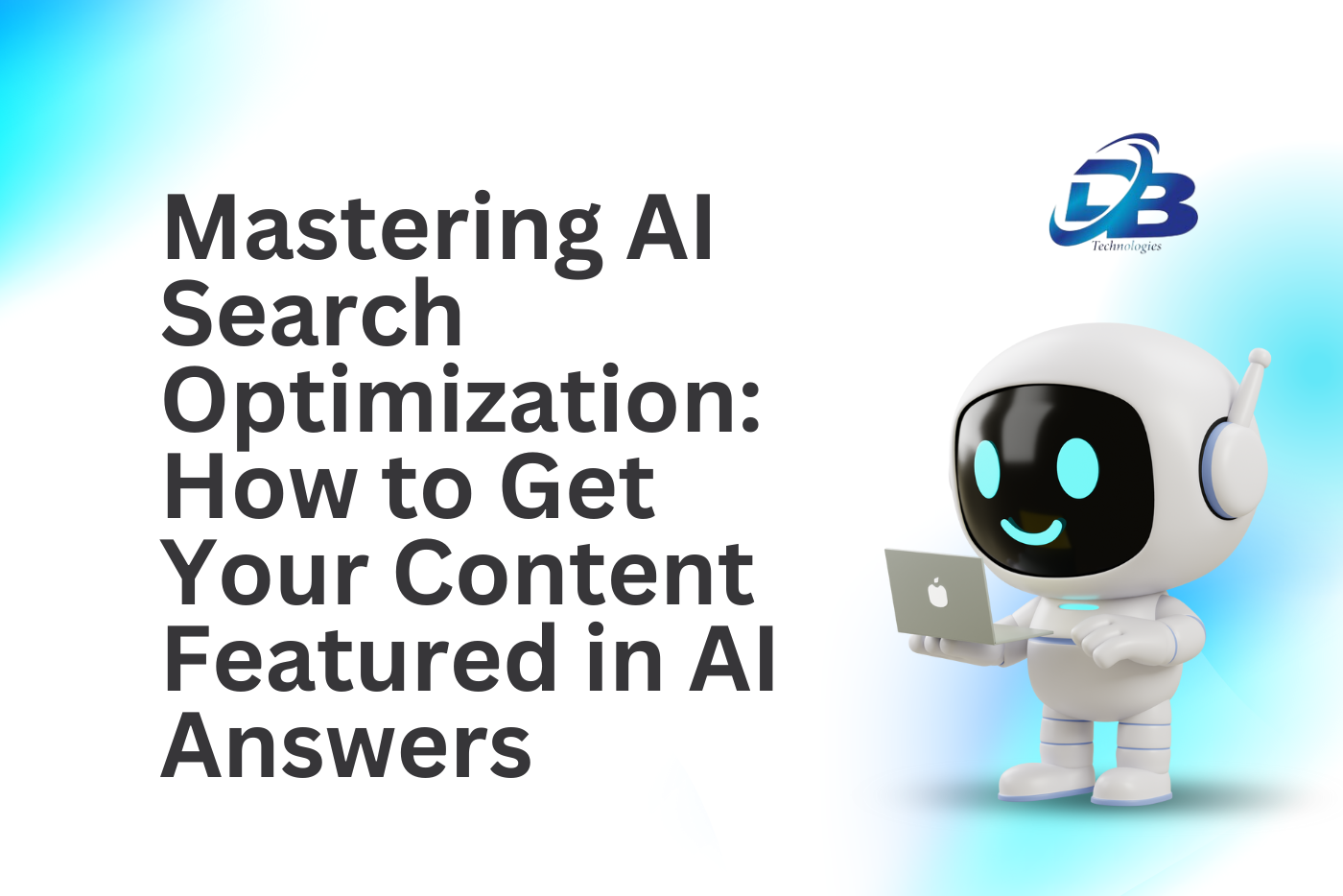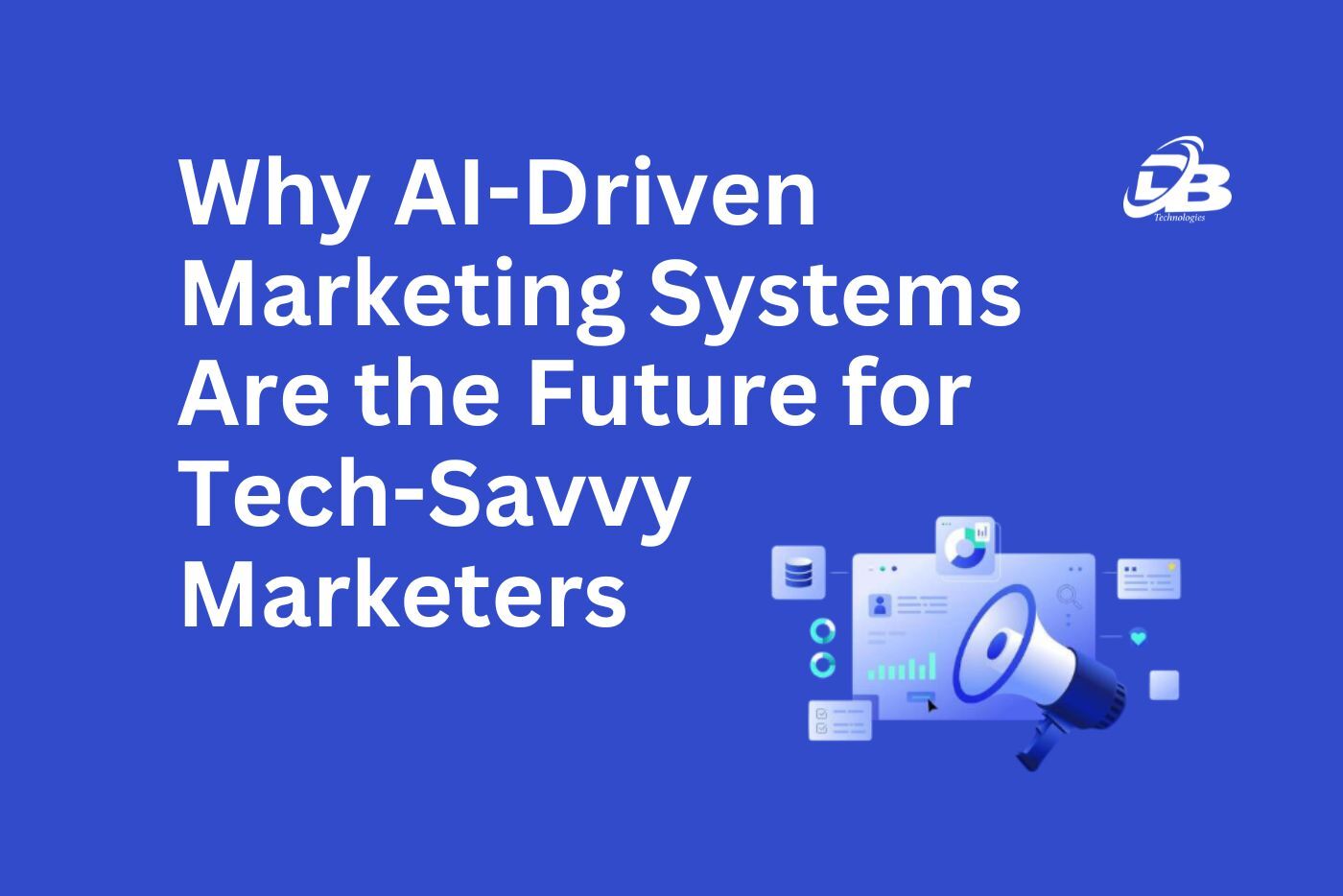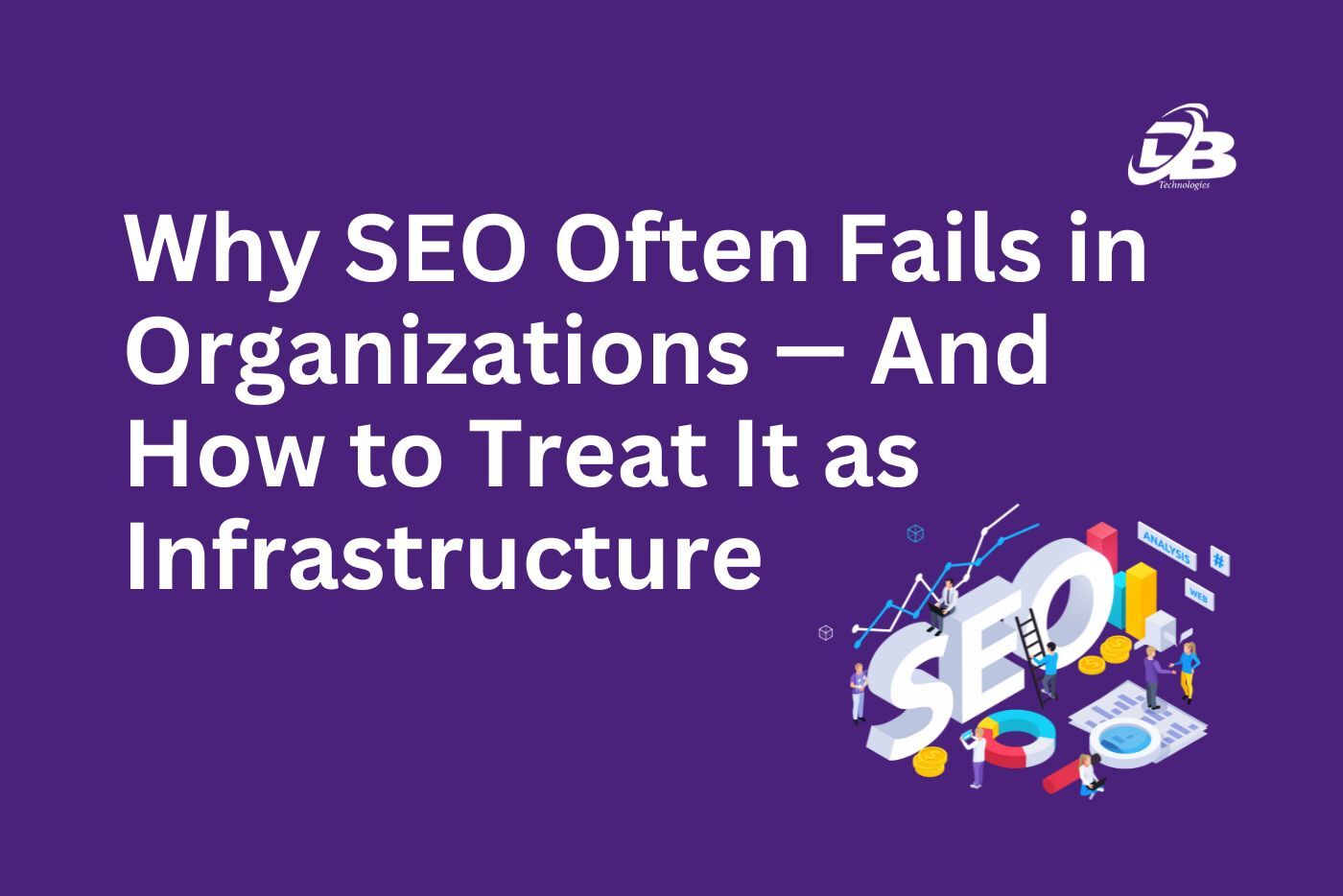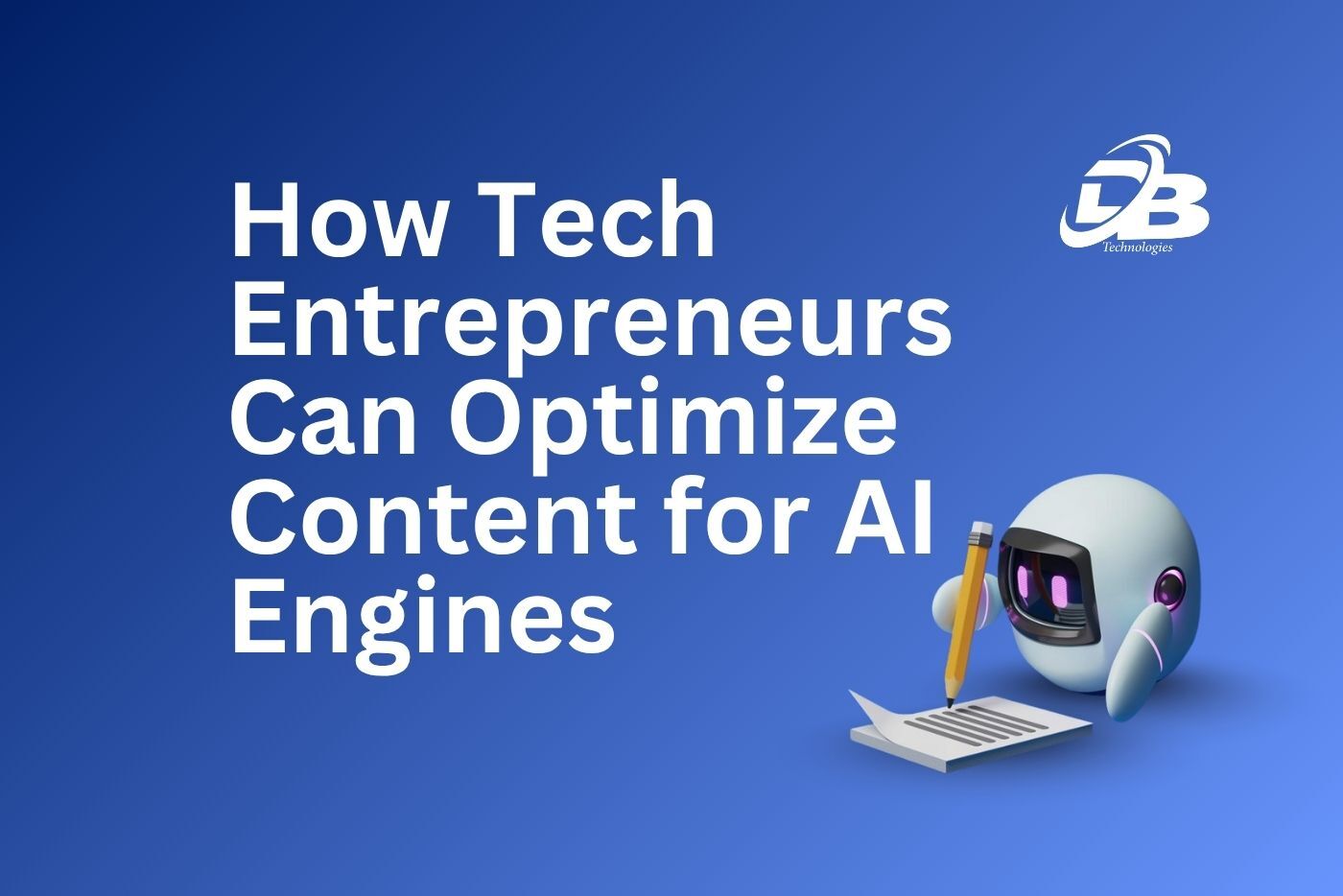
Traditional SEO (getting your page to rank in Google’s organic listings) is still important, but a new frontier has arrived, like AI-powered search. Tools and other generative systems don’t just show lists of links they synthesize answers, often citing or summarizing content from across the web.
That means there’s a fresh opportunity: get your content featured or cited by AI systems. That’s where AI search optimization comes in. It’s like SEO, but tuned for how large language models (LLMs) and AI answer engines think, retrieve, and present info.
This well researched blog is here to boost your chances of being quoted by AI in an “answer box” or AI summary.
What Is AI Search / Answer Engine Optimization?
Before digging into tactics, let’s clarify some terms:
1) AI Search / AI-powered search refers to systems that use large language models (LLMs) + retrieval to answer user queries. Instead of just showing links, they compose answers.
2) Answer Engine Optimization (AEO) (or sometimes called AI search optimization, GEO, Generative Engine Optimization) is the practice of shaping your content so that these AI systems cite, summarize, or pull from your page in their answers.
3) Unlike traditional SEO, the goal is less about ranking in the blue links and more about being seen or used as a source inside AI responses.
AI search optimization is not a total replacement of SEO , many fundamentals still matter (site speed, authority, good structure) but it shifts emphasis.
How AI Systems Pick Content: What They Look For
If we know how AI systems choose what to cite, we can align our content accordingly. Here are some important signals:
1) Authority & Trust
AI engines will prefer sources that appear authoritative: reputable websites, referenced pages, regular author, references. When your material is commonly linked, shared, and mentioned all over the web, then that is a good indicator.
2) Clarity & Structure
AI doesn’t like messy, unstructured content. Clear headings, answer-focused paragraphs, modular sections (each section answers a question) help.
3) Use of Schema / Structured Data
Using FAQ, HowTo, or Q&A schema helps AI systems understand parts of your content more easily, making it more “extractable.”
4) Citations & References
AI likes content that cites other sources or includes verifiable data. When your article includes named references, quotes, or linkable stats, it’s more “trustworthy” in the AI’s view.
5) Topical Depth & Breadth
A page that covers both core question and related sub questions is more useful for AI to pull from. Don’t just answer “what is X” also cover “why X matters,” “how to do X,” “common pitfalls,” etc.
6) Freshness & Updates
If content is stale or outdated, AI might favor more recent sources. Regular updates help.
7) Technical Accessibility
If AI can’t crawl your page, it won’t even see your content. Clean HTML, proper metadata, fast loading pages ,these still matter.
So with those in mind, here are some action steps.
1. Choose Your Topics & Keywords with AI in Mind
When we talk about keywords in AI search optimization, the approach is slightly different than classic SEO.
1) Use natural, conversational queries (people ask “How do I fix my phone battery life?” not just “phone battery optimization”). These match how AI engines see user intents.
2) Think in clusters or topics, not just single keywords. Cover related queries in the same cluster. This shows depth.
3) Probe what kinds of questions AI systems are being asked. You can try sample prompts in ChatGPT, Perplexity, or see what “People also ask” or question suggestions exist.
2. Content Structure
Here’s how to structure a page so it’s easier for AI to extract and cite your content.
a) Use modular sections
Split your article into self-contained blocks. For example:
1) What is X?
2) Why X is useful / important
3) Step by step guide for X
4) Mistakes to avoid
5) FAQs
b) Use question style headings
Headings like “How do I do X?” or “What are common mistakes with X?” help AI match user queries. Think about actual questions users ask.
c) Put the answer close to the heading
Don’t bury the answer deep in paragraphs. After the heading, give a concise, clear answer, then elaborate. AI systems often pick the first few sentences as a summarized response.
d) Use bullet lists, tables, and numbered steps
These are easier for AI to parse and replicate. If you can break down a concept into a list or numbered steps, do so.
e) Answer Follow Up Questions
Sometimes AI will continue a user’s thought path. E.g., the user asks “What is SEO for AI search?” then “How long should the content be?” Having those follow-up answers in your article increases chances AI picks you multiple times.
3. Use Structured Data
Structured data is still one of the most powerful ways to tell machines what your content is “about.” For AI search optimization, schema markup helps generative systems understand sections like FAQs, HowTos, definitions.
1) Use FAQ schema for question-answer sections.
2) Use HowTo schema for procedural or tutorial content.
3) Use Article or Blog Posting so that the AI knows it’s a content article.
This doesn’t guarantee you’ll be cited, but it increases the chance AI will correctly map your content.
4. Build Trust & Authority (Signals AI Cares About)
Appearance and structure isn’t enough if your content seems flimsy. You’ll need trust signals that AI engines deem credible.
a) Cite credible external sources
If you refer to data, studies, reports, link or mention them. This shows you’re not making empty claims.
b) Author info & credentials
If your article has a byline and a short author bio (with credentials or expertise), that helps. It’s a trust marker.
c) Internal & external linking wisely
Link to other relevant pages within your site (contextual internal links). Also link out to authoritative, relevant sources. Don’t link to low quality or spammy pages.
d) Earn backlinks & mentions
The more your content is referenced by other sites, blogs, or news, the more weight it carries. AI systems often favor sources that are widely linked and cited in the web’s “consensus.”
e) Keep content updated and accurate
If AI sees contradictory or outdated information, it might skip your page. Regular updating signals freshness and reliability.
5. Technical SEO that Supports AI Discovery
Some SEO basics remain absolutely essential because if AI can’t crawl or process your page, none of the above matters.
1) Ensure fast page speed , ompress images, use caching, avoid oversized scripts.
2) Use clean HTML
3) Ensure your site is served over HTTPS.
4) Use sitemaps and keep them updated.
5) Avoid orphan pages (pages not linked from anywhere) — every important page should be reachable.
6) Fix broken links, redirect chains, 404s. A messy site can reduce crawl budget.
These practices help AI agents find and read your content reliably.
6. Optimize for Citability: Make Your Content “Snippetable”
Even when AI uses your content, it often picks snippets — short paragraphs, bullet lists, or definitions. So aim to make those “snippetable.”
1) Start your paragraphs with the main point (inverted pyramid style).
2) Use bullet lists where possible.
3) Provide short definitions or clear “what is X” statements.
4) Put data or stats in short sentences.
5) Use highlighting phrases like “In summary,” “To conclude,” “Steps are: …”
In case a paragraph is lengthy or wordy, AI may not read or read it correctly.
Add clear signals like “key takeaway” or “Always remember’ to assist AI in locating the main message.
7. Monitor & Test
Once your content is live, you need a way to check if AI systems are picking it up. Here are methods:
1) Use tools or features that allow you to inspect which sources AI models reference.
2) Track referral traffic from AI sources to your site (if available).
3) Use rank tracking tools that include AI answer features.
4) Set Google Alerts or backlink alerts to see if other sites reference you.
8. Common Mistakes & Pitfalls (so you don’t do them)
Because we humans love shortcuts, here are errors to avoid:
1) AI systems are smarter. Keyword stuffing may backfire.
2) If your article is just long paragraphs with no headings, it’s hard for AI to parse.
3) Using fluff or generic content just to “fill pages.” AI wants substance.
4) Ignoring updates is another mistake. If your content is stale, AI might favor fresher sources.
5) No citations or data must be avoided, if every claim is unsupported, AI might doubt your page’s reliability.
6) Not planning for follow-up queries.If your content doesn’t cover adjacent questions, AI might skip you for that path.
How Much Effort vs Reward?
You might ask: is this extra effort worth it? The answer is yes, more than ever.
1) AI systems are increasingly becoming the first stop for many searchers.
2) A mention or citation in AI responses can drive high-quality referral traffic (users already primed to read).
3) As search evolves, being skipped by AI may eventually hurt discoverability.
4) Because many fundamentals overlap (good content, speed, authority), you’re improving your site overall, not doing a separate “magic trick.”
To further enhance your knowledge, we recommend reading our blog “ AI-Powered SEO Strategies: How to Future-Proof Your Search Rankings.
Wrapping up
We’re in an exciting transition. The web is no longer just about ranking in a list of links, it’s about being seen and used inside AI-driven answers. AI search optimization (or Answer Engine Optimization) is a skill that bridges great content and smart structure.
By focusing on clarity, trust, modular structure, questions, schema, and technical integrity, you increase your chances of being cited by AI feed.












